To say that I love mint would be an understatement. It’s a plant I really couldn’t live without. From calming mint teas, which soothe the soul, and help to relieve colds and hay fever, to refreshing garnishes that work just as well in savoury food as they do in desserts, it’s an essential garden plant.
Mint also works beautifully as a fragrant posy in summer, and fills the house with scent. So, whether you’re looking for alternative bouquets, a gentle pest deterrent, or something to spice up your kitchen table, it just has to be mint.
But here’s the tricky part… We’re all familiar with peppermint and spearmint, but did you know there are dozens, and dozens of cultivated mints, each with a unique fragrance, flavour profile, and colouring?
While I’m not about to do a species profile on every single mint, there are thirty types of mint that are distinctly different enough from another to be worth growing on their own merits, and we grow every single one right here.
More...
How to Grow Mint in Australia
Mint is one of the easiest plants to grow, and you’ll likely end up with more than you need, and a generous supply of mint to harvest, as well as divisions to give to friends in spring for their own gardens.
All mint needs is a good sunny spot, with reasonable drainage and a good drink during dry weather.
Obviously, there are variations in some mint varieties, like water mint (marsh mint) for example, which likes to have its feet in damp conditions nearly all year round, but for more guidance on how to grow mint at its very best, see our guide to growing mint in Australia.
30 Types of Mint to Grow in Australia
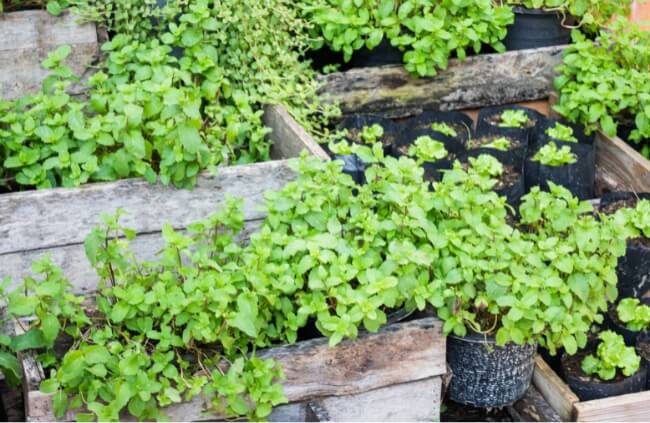
There are around 600 different types of mint around the world, split between around 30 true species growing wild, and countless hybrids. Within each species and hybrid type of mint, there are cultivated varieties that have been bred to enhance specific flavour profiles.
Some are simple, like spearmint (a natural species, but with a sweeter kick) or lemon mint, with a vivid zest to it, but others, like kiwi mint, banana mint, or pineapple mint are truly unique.
Some information online suggests that there may be over 7,000 types of mint out there, but that’s referring to the wider family (Lamiaceae) which includes Salvia, Agastache, Nepeta and Monarda (to name a few).
In the true mint family (Mentha), the choice is more limited, but still vast, so let’s take a look at our absolute favourites.
1. Apple Mint (Mentha suaveolens and Mentha × rotundifolia)

Mentha suaveolens is also known as round leaf mint, woolly mint and, most commonly, apple mint. Apple mint is gorgeous mint, with some more specific cultivars, including a slight variegation on leaf edges. Its texture is, as you might expect, quite woolly, so it works best in infusions and cocktails, rather than as an edible garnish.
It always looks happiest in pots, cut back hard in spring to encourage a neater mound, and more even flowering. Once flowered, the leaves become a little tougher, so it’s worth cutting half the plant back to get more vigorous and softer foliage later in summer and autumn.
Note: Mentha x rotundifolia, a hardier hybrid type shares many of these properties, and has a similar flavour, so is also regularly referred to as apple mint or round leaf mint.


Get Your Free Guide:
Master Growing Australian Natives eBook
A Must Have Complete Guide for Every Australian Garden
Get Your Free Guide:
Master Growing Australian Natives eBook
A Must Have Complete Guide for Every Australian Garden
2. Banana Mint (Mentha arvensis ‘Banana’)
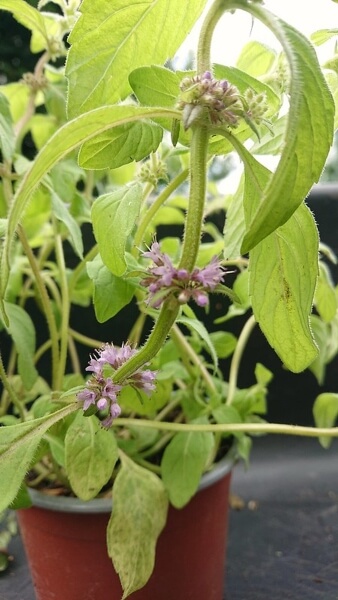
Source: Shire Plants
Mentha arvensis is one of the most popularly hybridised mints, thanks to its intense sweetness, which makes it quite simple for breeders to develop distinct flavour profiles. Banana mint (Mentha arvensis ‘Banana’) is just such a mint.
While many mints have an aroma that’s similar to their scent, banana mint also has an undeniable flavour of banana. Its soft leaves are perfect for garnishing desserts, and if you have the time, a truly gorgeous ice cream by infusing cream with the mint before preparing.
Banana mint is incredibly easy to grow, with soft, chewable leaves in spring that develop tiny hairs in summer to conserve moisture. Even after flowering, banana mint is delicious fresh or infused.
3. Basil Mint (Mentha × piperita f. citrata ‘Basil’)

Bail mint is one of those wonderful mints that just seems to keep on giving, and definitely one of the best for savoury dishes. Like every cultivar from the Mentha x piperita hybrid group, Basil mint has thicker foliage, and softer stems, so the entire plant can be used.
Basil mint makes a particularly nice tzatziki with Greek yoghurt and grated cucumber (just remember to remove the seeds from the cucumber first, and squeeze out the juice before mixing it up).
4. Bowles Mint (Mentha × villosa ‘Alopecuroides’)
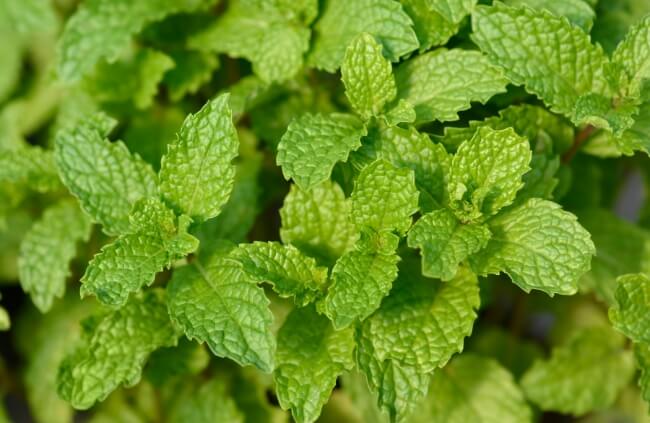
Bowles mint, also called Bowles’ apple mint, is a hybrid between apple mint and spearmint. Its softer leaves share their flavour with apple mint but their texture with spearmint, making it a much more versatile choice.
However, it is absolutely essential to plant it in containers as it is one of the most vigorous mints, often spreading well beyond pots and into borders. We found a runner from this troublesome mint that has drooped 30 cm away from its pot and rooted into the border, so it really does need regular maintenance.
The payoff is huge though, with a gorgeously textured and flavoured mint for pretty much any use.
5. Canada Mint (Mentha canadensis)
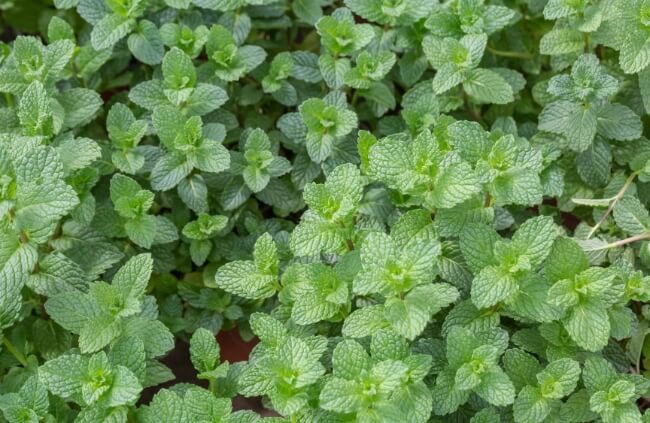
One of my favourite ornamental mints is Mentha canadensis (Canada mint), which has upright stems, and repetitive clusters of lilac-coloured flowers all the way up its stem.
It spreads, and it spreads well, but if you plunge a container into the ground, it’s easy to control and offers reliable scent and sweeping long stems, which can either be left to grow tall and ornamental, or cut back in spring for a short, bushier plant.
In the US and Canada, this is the most common native mint, found growing wild throughout the continent. It’s able to cope with a lot of conditions, but is best in at least some afternoon shade throughout Australia.
6. Chewing Gum Mint (Mentha spicata ‘Yakima’)
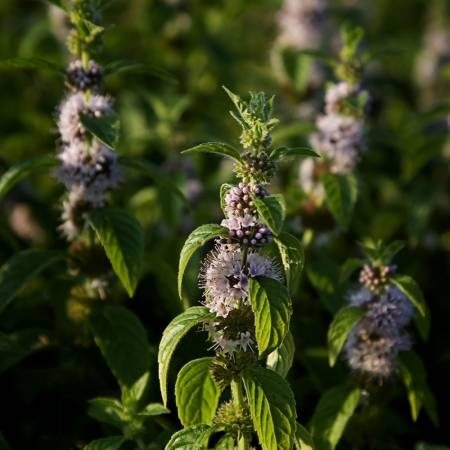
Source: Kelley Pure Essential Oils
One of the most pungent mints you can grow is Mentha spicata ‘Yakima’ (Chewing Gum Mint), which has all the sweetness of spearmint, with the strength of peppermint. Its soft leaves are easy to cultivate, and simple to use, but as the name suggests, its best use is as an instant breath-freshener.
Its large leaves can be used whole in salads, and work beautifully with fresh, sliced and salted tomatoes and a few whole olives for a refreshing but rich lunch.
7. Chocolate Mint (Mentha × piperita ‘Chocolate’)
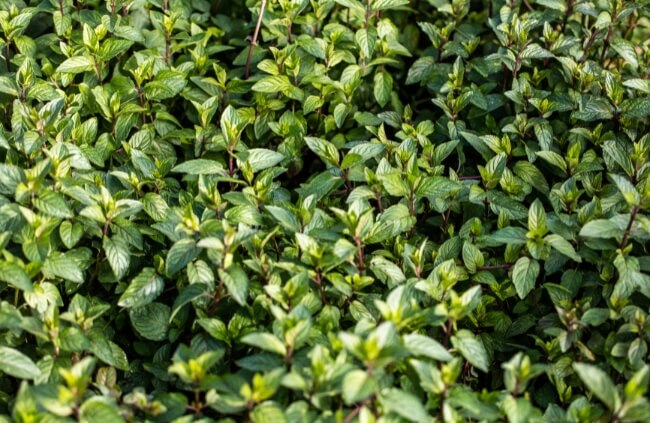
Chocolate mint, another cultivar of the Mentha x piperita hybrid, is one of those mints that gets a lot of attention, but doesn’t really live up to the hype.
Its scent is pungently chocolatey, but its flavour is one of the mildest there is. However, with soft stems and delicate leaves, it’s got plenty of potential in the kitchen, and is a fun addition to chocolate desserts, turning cakes into mint-choc-chip flavour pretty much instantly.
8. Corsican Mint (Mentha requienii)

Mentha requienii, better known as Corsican mint, is a small-leaved mint, which works well as a tough ground cover plant, spreading easily through beds and borders. While it won’t quite hold up to heavy foot traffic, it does work as a lawn alternative, and can be controlled by edging the lawn area twice a year.
However, as with all mints, if you want to keep it under control it looks at its best in a hanging basket, or window box, where it will trail down, requiring pruning each winter to encourage fresh and vigorous trailing mint in spring.
9. Curly Mint (Mentha spicata ‘Crispa’)

If you find it growing in your garden, you’d be forgiven for thinking there was something wrong with Curly mint, but the crinkled, thick, sturdy leaves are actually one of the most useful parts of any mint plant there is.
Curly mint is a cultivar of spearmint (Mentha spicata), but with shorter, denser foliage, and a more concentrated flavour. Because of that, you’re much more likely to find curly mint in commercial cultivation, than in a domestic garden centre, as it’s one of the more common types of mint used in mint sauce, mint ice creams, and to extract essential oils from.
It’s also, and this is important, one of the easiest mints to grow on poor soils, and can be used even when it dries out in the garden. To store curly mint for longer, dry it out slowly on a windowsill or on very low heat in the oven before leaving it to cool at room temperature.
It can be ground down or preserved as whole leaves for a quick and potent mint tea.
10. Eau de Cologne Mint (Mentha × piperita ‘Citrata’)
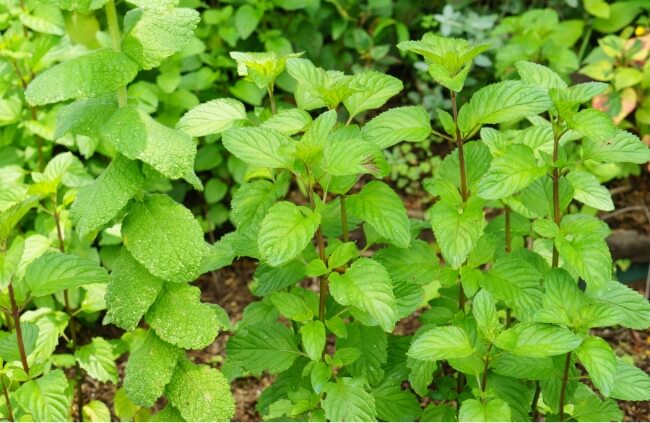
Also called Orange mint, Mentha x piperita ‘Citrata’ is one of the best known cultivars of peppermint. Its common names, Eau de Cologne mint and Bergamot mint, couldn’t be a better description of its scent and flavour if they tried.
This highly perfumed, incredibly pungent mint is, if I’m honest, one of my least favourite, because its flavour is so powerful that it’s almost bitter. Its saving grace is that its wide, soft leaves, store wonderfully in a vase, and will fill your home for weeks.
Another huge benefit of cutting mint for vases is that it will nearly always root into the water, offering far longer lasting vases than cut flowers ever do.
11. Wild Mint (Mentha arvensis)
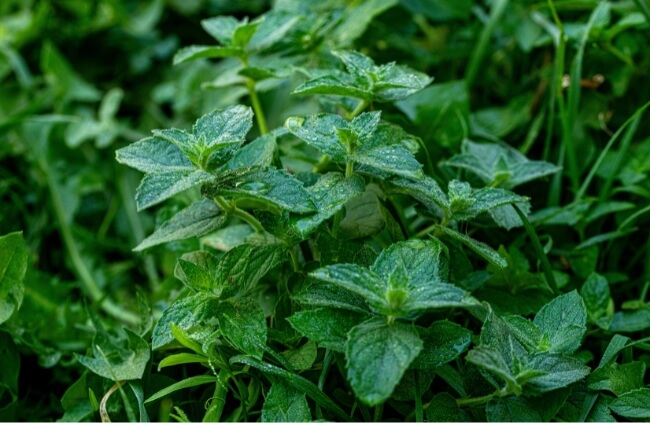
Field mint, sometimes called wild mint or corn mint, is one of the most widespread mints in nature. It is found growing in every corner of Europe and North America, as well as most of southern and western Asia.
While every mint in this list is cold hardy, field mint is hardy regardless of rainfall, meaning it can withstand a damp, cold winter with ease.
As you might have guessed by its successful natural spread, it will almost definitely try to spread by its fast-growing rhizomes in your garden, so will definitely need containerising.
12. Ginger Mint (Mentha × gracilis)
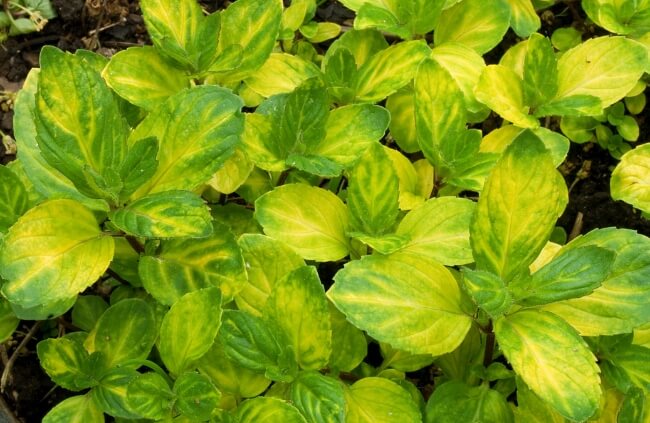
Mentha x gracilis is a gorgeous herb, with beautiful red stems, and soft leaves, packed with essential oils. In fact, it’s actually used more commonly in spearmint chewing gum than spearmint itself thanks to its potent flavour.
It’s incredibly easy to grow as it’s a hybrid between spearmint (M. spicata) and field mint (M. arvensis), offering resilience and flavour in equal measure.
13. Grey Mint (Mentha longifolia)

Spear-shaped foliage, with soft hairs covering every leaf after flowering, set grey mint apart from the rest. Its silvery foliage gives it several names; grey mint and silver mint being the most common.
In terms of structural impact in your garden, Mentha longifolia is definitely a great choice, offering pale, striking foliage colour, and dense racemes of pale-purple flowers in summer. It’s best grown for its scent, as like any woolly-leaved mints, its texture isn’t particularly pleasant. However, it does make a gently flavoured tea when dried and infused.
14. Japanese Peppermint (Mentha arvensis var. piperascens)
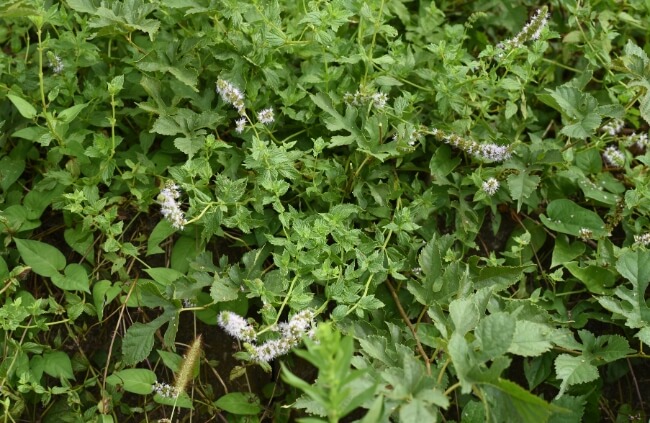
Often confused with Japanese mint, Japanese peppermint has distinctly round leaves that set it apart, with foliage that retains its texture even after flowering. While it’s best used fresh, its powerful peppermint flavour makes one of the best mint teas there is, packing a powerful punch that helps with colds and blocked noses.
Beyond its culinary uses, it’s a fairly standard-looking mint, but at 60 cm high it is one of the tallest varieties for gardens, and works wonderfully when planted in pots alongside paths, so you brush against it and release its scent.
15. Japanese Mint (Mentha spicata ‘Abura’)

This Japanese spearmint, best known as Japanese mint, but most accurately called Japanese medicine mint, is a great addition to any apothecary garden. Its potent essential oils are abundant, and it copes well with slightly wetter soils.
If grown in containers, it’s important to cut it back regularly, as the stems and leaves are equally usable, but the stems are only tender enough to eat when the stems are young.
16. Kiwi Mint (Mentha cunninghamii)
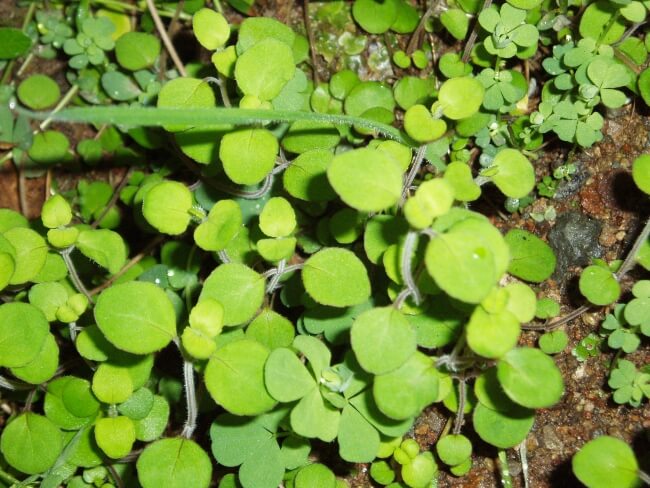
Source: Wikipedia
One of the best prostrate (trailing) mints is Kiwi mint. Native to New Zealand, this diminutive mint is a beautiful plant for hanging baskets, and copes well with drought.
Despite being a reasonably effective ground cover, it tends to grow quite sparse after the first few years, so won’t form the same dense mat that Corsican mint would, so I’d very much suggest planting it in smallish pots, and keeping it on an outdoor table as an interesting centre piece.
Thanks to its tiny foliage, it can be picked straight from the plant to garnish salads, but I personally find it works best with zesty desserts like lemon cakes or fresh yoghurts.
17. Lavender Mint (Mentha × piperita ‘Lavandula’)
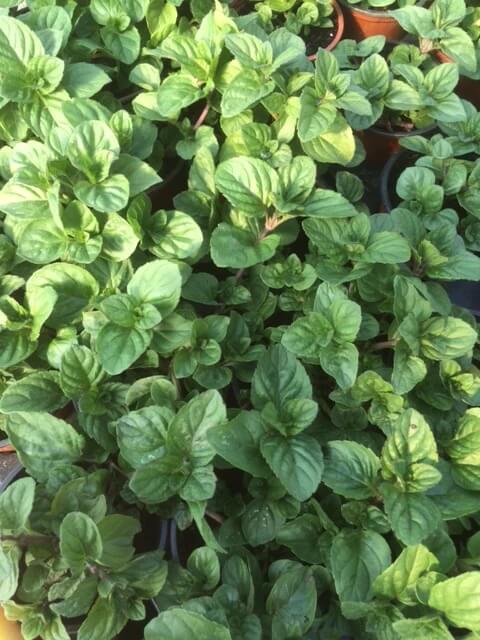
Source: Culinary Herb Co
The dense, slightly crinkled leaves of Lavender mint look utterly beautiful in the garden, and their dark stems add structure too. Once in flower, its long, staggered racemes don’t look dissimilar to lavender, but it’s its subtle flavour which is most notable.
Lavender is one of many members of the Lamiaceae (mint) family, so the blurred flavour profiles here shouldn’t come as a surprise, but it nearly always does.
If you want to try out a mint that stands out from the rest, and puzzle your dinner party guests, then Lavender mint should be top of the list.
18. Lemon Mint (Mentha × piperita var. Citrata ‘Lemon’)

Source: Gardenia
If you’re a fan of lemon balm (Melissa officinalis) but not of the texture, why not grow Lemon mint instead?
It’s part of the same hybrid group as basil mint, chocolate mint and orange mint, so shares their soft, slightly waxy leaves, and tender stems, and its gentle citrus flavour is incredibly similar to lemon zest, making it a perfect finishing ingredient for creamy pasta dishes.
One of the best things about this refreshing mint is its flowers, with beautiful white petals, and deep purple bases, which are incredibly attractive to pollinators.
19. Mojito Mint (Mentha x villosa ‘Mojito’)
Mojitos are perhaps the best indication of summer, and their fragrance is enough to settle you on even the warmest afternoons. If you’ve ever tried a true mojito, using Mentha x villosa ‘Mojito’ (also known as ‘Cubanito’), that sweet, fresh, minty, drink jumps to a whole other level.
Traditional mojitos, direct from Cuba, use Mojito mint for the perfect blend of sweet or savoury, so if you want a taste of Caribbean at home, this is the mint to grow.
Mentha spicata ‘Hemingway Mojito’ is commonly confused for Mojito mint, but slightly more similar to spearmint, at least in shape. Its flavour, however, is just as good in mojitos, adding sweetness as well as zest.
20. Moroccan Mint (Mentha spicata var. crispa ‘Moroccan’)
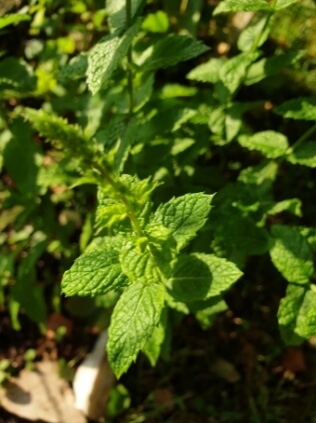
With the same flavour profiles as Curly mint, but smoother foliage, Moroccan mint offers an easier culinary herb, which dries well with a powerful spearmint flavour.
For cooler parts of Australia, particularly those with wet winters, Moroccan mint is a great choice, as it offers tender stems as well as full winter hardiness. Grow it in pots without any winter protection for one of the easiest mints you can grow.
21. Pennyroyal (Mentha pulegium)
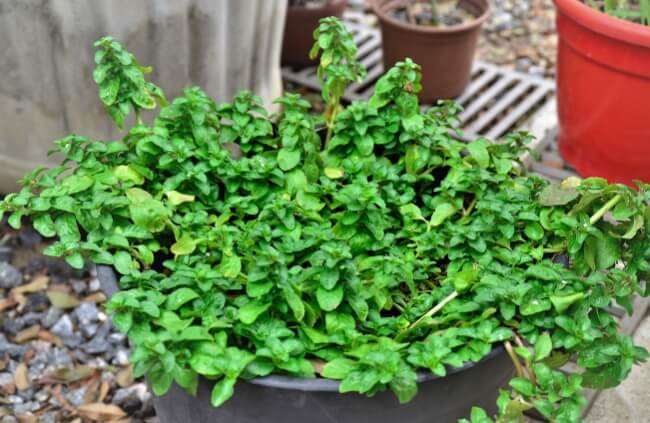
Pennyroyal comes with a bit of a safety warning, but it is still worth growing. This traditional remedy is credited with several cases of liver failure, and was used to induce vomiting, perspiration and even abortions in the 1800s. For obvious reasons, it’s not a herb to use lightly.
However, it is also one of the most effective insect-repelling plants you can grow, and thrives in damp borders or around pond edges, where it deters mosquitoes from laying.
It’s also one of the most beautiful mints there are, with stunning spikes of flower in sequential racemes. If you find a self-seeded mint in your garden and you or your neighbour grows pennyroyal, weed it out to avoid confusion with other mints. Instead, propagate edible mints from divisions and cuttings to keep new plants true to their cultivar.
22. Peppermint (Mentha × piperita)
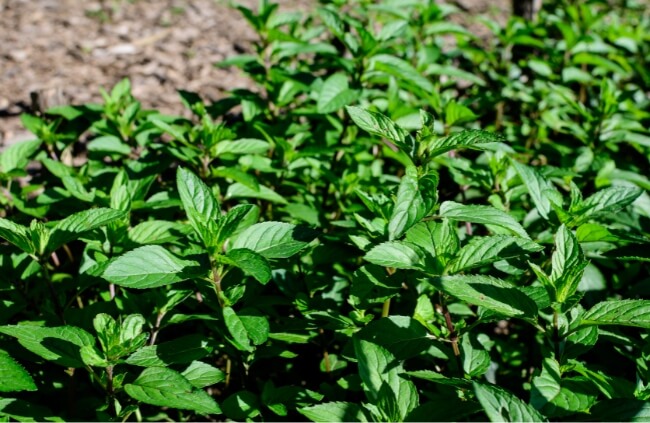
Peppermint just keeps giving. We use it more than any other mint, because its savoury flavour is the easiest to adapt to most dishes, and it grows so rapidly here that we tend to harvest more than we can use.
If you want a simple, productive, practical mint to grow at home, that’s peppermint (Mentha x piperita). As young stems, the whole thing can be eaten. After flowering, strip the leaves from woody stems for a perfectly edible leaf, then cut back the stems to encourage fresh growth right into winter.
23. Pineapple Mint (Mentha suaveolens ‘Variegata’)
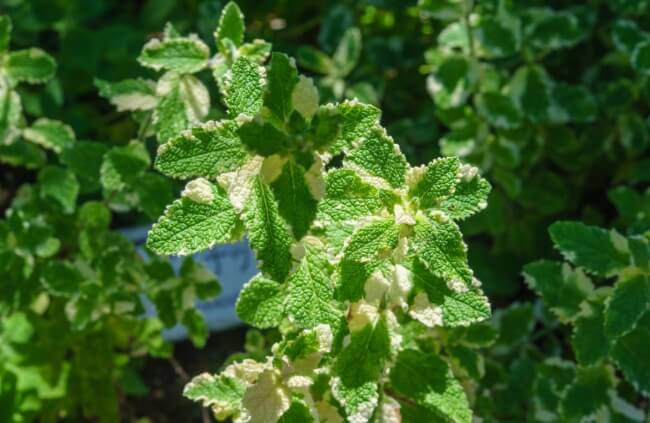
Mentha suaveolens ‘Pineapple’ and Mentha suaveolens ‘Variegata’ are, as far as I can tell, the same plant. They share an identical flavour, identical foliage, and identical growth habits, but they always seem to be sold as unique cultivars.
Regardless of the confusion about their name, pineapple mint is a beautiful mint to grow at home. Its variegated leaves aren’t the only thing separating it from apple mint though. It has that unmistakably juicy, and impossible to describe, flavour of pineapple.
Grown in window boxes, hanging containers or vertical planters, it will start out upright, but droop under its own weight for a controllably trailing mint that works in any space.
24. Red Raripila Mint (Mentha × smithiana)
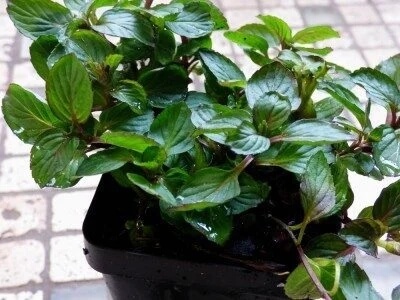
Source: Gardening Know How
Red raripila mint has a similar texture and form to chocolate mint, but it’s actually a hybrid of M. arvensis, M. aquatica and M. spicata. It grows really well in damp conditions, and is incredibly easy to root from cuttings in water.
While it’s not commonly grown in Australia, it’s worth looking out for as its mild flavour and gorgeously textures leaves are just delicious however you use them. Its flowers are simple, and its structure isn’t much to write home about, but its new growth is dense and dark, before leaping up into subtle flowering spikes.
25. Sharp-Toothed Mint (Mentha wirtgeniana)
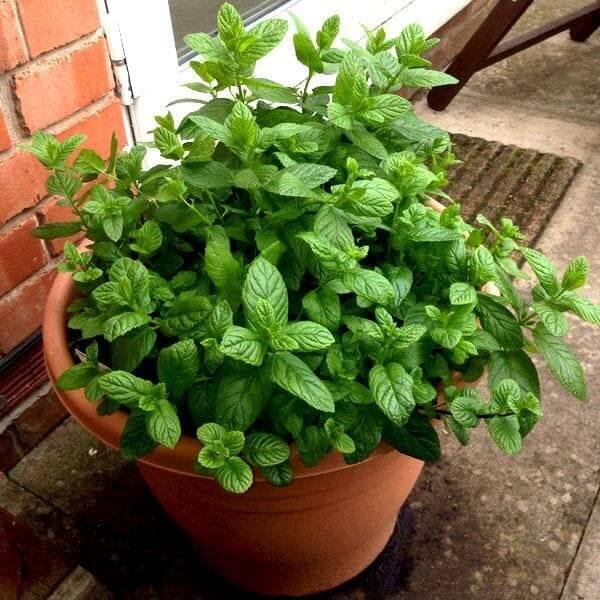
OK, so sharp-toothed mint is a messy choice, but for wilder gardens, where you’re trying to encourage pollinators, and manage pests with natural means, it isn’t as thuggish as many other cultivars and can be planted directly into long grass, and cut back with a lawn mower each year.
The toothed leaves that give it its name are really stunning, and just as edible as the rest of the more common culinary mints. Its biggest selling point is its dense flower clusters, which look more like Agastache than true mint.
26. Spearmint (Mentha spicata)
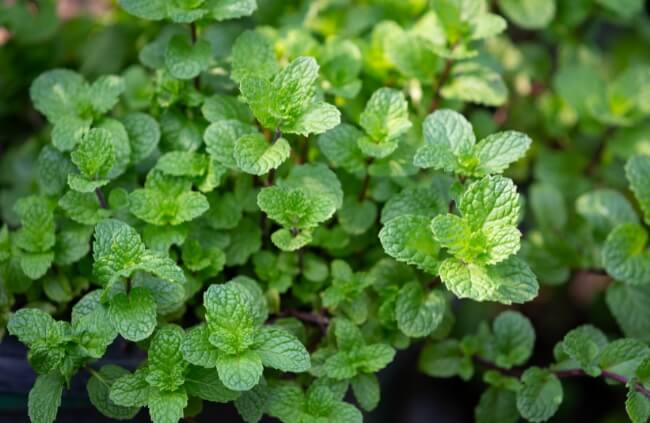
Widely used as the base for other cultivars, and easily hybridised (both in nature, and by breeders), spearmint is probably the most popular mint in the world. Its sweet flavour makes it beautiful to eat straight from the plant, and its light foliage means it’s incredibly easy to dry for long-term storage.
While it’s at its best planted en masse in a brave border, with regular management, I adore how it looks when light pours through the leaves like stained glass, so always grow it in window boxes, where it thrives, stays contained, and filters a beautiful green light into my kitchen from outside.
You can grow spearmint on nearly any soil, but it likes regular watering through summer so it maintains a good texture, and should be cut back as soon as flowering has finished to promote a fresh flush of foliage later in the season.
27. Strawberry Mint (Mentha × piperita ‘Strawberry’)

Like most piperita cultivars, strawberry mint is more about scent than flavour, but if you keep it well watered and harvest the youngest growing tips, there is a definite hint of strawberry flavour present.
Regardless of potential flavour disappointment, the gorgeous fragrance and tight structures of these diminutive mint plants make them perfect for patios and balcony gardens, where space is an issue, but you’d still like a good crop of harvestable herbs.
28. Swiss Mint (Mentha × piperita ‘Swiss’)
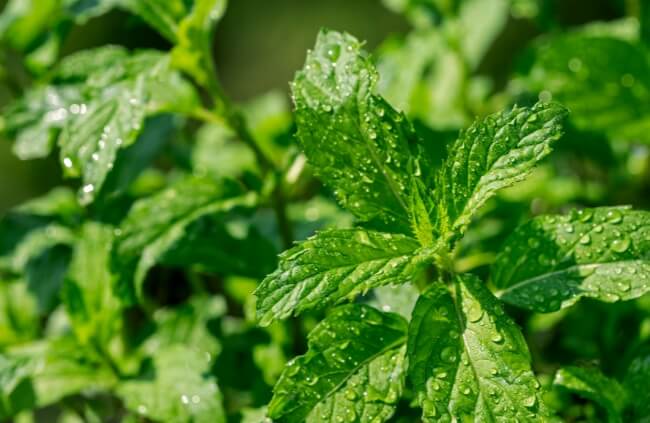
Swiss mint’s elongated spear-shaped foliage offers something visually unique, as well as seriously intense flavour. Just a few leaves are enough to flavour most dishes, with a pungency about 50% stronger than peppermint (Mentha x piperita).
If grown in containers, it is easy to control, but is surprisingly slow to spread across borders. If you’re growing it as an edible, plant it in a well-drained pot and keep it reasonably well watered through spring and summer.
For border planting, avoid watering as it will cope with drought, and spread less.
29. Water Mint (Mentha aquatica)

Water mint, or Marsh mint, is one of the most adaptable mints you can grow, and definitely one of the easiest to contain without pots. It requires damp, boggy, or even submerged conditions, so won’t spread to dry borders easily.
Planted into a pond basket and placed around the pond edge, it will need regular division to allow light into the water, but it’s also a brilliant filter for pond life. On top of that, it’s an effective way to discourage mosquitoes from laying in ponds and still water, and just as useful in the kitchen.
30. Whorled Mint (Mentha × verticillata)

Source: Plants of the World Online
This exceptionally tall mint hybrid (Mentha x verticillata) can reach 70 cm tall while flowering, with wonderfully whooshing stems, and a more rounded scent than water mint, which is its primary parent species.
It grows well in marshy or boggy conditions, but will also survive droughts provided it's cut back and watered to trigger new growth. When grown in pots and containers, whorled mint looks leggy and unruly, so really needs to be planted as part of a mixed bed.
It’s not particularly mound forming, but will spread into loose clusters of tall stems that flow through other planting.
Take Your Pick and Start Growing these Types of Mint in Your Garden
I’ll always be a sucker for the more basic mints, like peppermint or spearmint, but if you’re looking for more specific flavour profiles, there’s nothing quite like Mojito mint to get these taste buds tingling.
Even if you’re not a big fan of mint as an ingredient, don’t let that stop you from growing at least one of these natural pest repellents in the garden. All types of mint has its merits (even the poisonous ones…) so there’s a mint variety out there for everyone.
Published on September 2, 2023 by Gary Clarke
Last Updated on October 18, 2025





